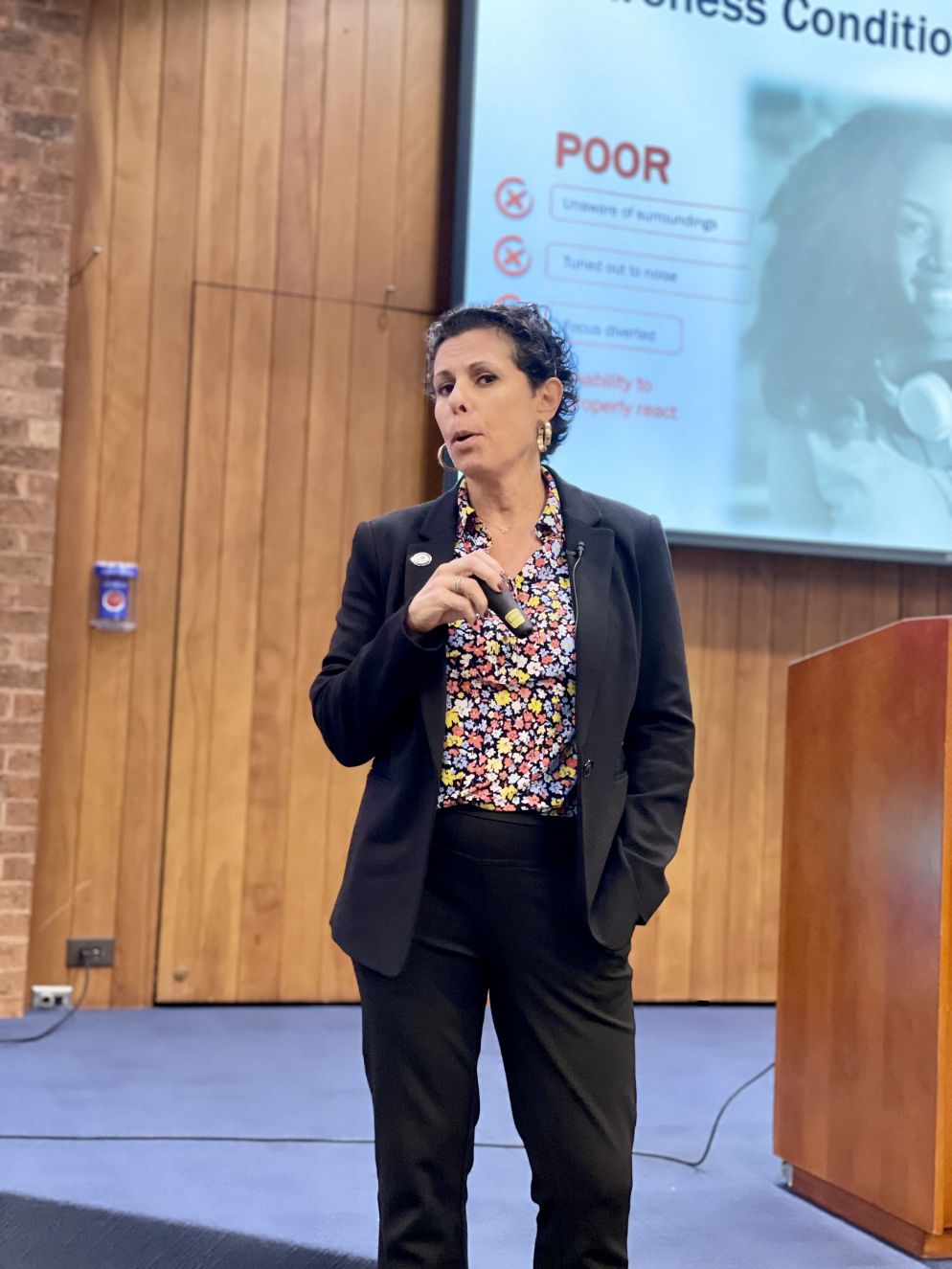Rising antisemitism, hate crimes and hate rhetoric have put the Jewish community and other faith communities on high alert, according to Shauna Leavey, director of community engagement for the Jewish Federation of Howard County.

With that in mind, last weekend, on March 19, 145 people of different faiths met at the Oakland Mills Interfaith Center, also known as The Meeting House, to hear from former FBI agent Stephanie Viegas about what they can do to keep their faith communities safe.
The Countering Active Threat Training program was held by The Associated: Jewish Federation of Baltimore, the Baltimore Jewish Council, the Jewish Federation of Howard County, the Jewish Community Relations Council of Howard County and the Oakland Mills Interfaith Center. Another training was also held at the Weinberg Park Heights JCC on March 20.
Viegas now works with Secure Community Network, and she travels the country helping Jewish organizations maintain an environment of safety and security.
“The more we learn about staying alert and safe in houses of worship, the better prepared we can all feel in responding when incidents occur,” Leavey said.
The training, known as Countering Active Threat Training, or CATT, teaches people how to respond to situations where someone is an immediate threat or imminent danger.
Though this kind of training takes place often, repeated education can be the difference between life and death, according to Viegas.
“Though Jews make up only slightly more than 2% of the U.S. population, nearly 60% of all religiously motivated hate crimes in the U.S. target the Jewish community,” Viegas said. “Jews face an extreme threat, but not an exclusive one. We know that the security measures that safeguard our community can also benefit others. Like the training tonight, we shared information about security with other faith-based organizations. Everyone should be afforded to live a life of faith.”
During the presentation, slide after slide shared information about recent attacks on faith and community centers, including the Pittsburgh Tree of Life synagogue shooting, the Chabad of Poway synagogue shooting and the Colleyville Congregation Beth Israel synagogue hostage crisis.
BJC Executive Director Howard Libit was in attendance Sunday night and commented on the necessity of this program and others like it.
“I’ve been through a number of these trainings, but I think that repeating the trainings regularly is very important for our awareness and preparation,” Libit said. “Unfortunately, trainings like this have been a critical part of faith communities, not just Jewish synagogues, but all faith institutions.”
Attendees learned that the most important things to remember in a crisis are to breathe and to commit to action. Viegas said that this means drawing on the training to choose the best response, whether to run, hide or fight — and when.
CATT doesn’t only teach response; it also teaches prevention. Sunday’s training included a story from 2010, when New York City street vendors helped avert disaster by alerting the New York City Police Department to a smoking vehicle that was later revealed to have contained an explosive device.
Viegas described this as focused awareness, which she said enables people to have a faster reaction time, improving their chances of survival in a crisis situation.
“Whenever possible, remove distractions that might lower your situational awareness in any capacity. Your safety should always be number one. The worst thing you can do is to become complacent,” Viegas said.
People can improve their situational awareness by only using one earbud to listen to music, putting their phone away when walking and taking note of unusual behavior.
Preparedness looks different depending on where a person is, but it’s always important to know the following: how you can get out, where you will run to, where you can hide or barricade, how and whom you can call, what can be used to fight and who nearby has formal medical training.
These things are especially important to know in high-risk areas, such as in crowds, at the grocery store or at places of worship.
Advances in technology are also changing how faith communities prepare, monitor threats and mitigate the impact of threats. Algorithms combined with high-tech digital surveillance equipment and new software can detect movement and recognize individual faces.
However, Viegas cautioned that strong encryption should also be used to ensure a secure connection between the devices and the systems they operate on, and while these technological advances are valuable tools to keep communities safe, effective security comes from a combination of people, training, policies, equipment and other resources.
“There is no one-size-fits-all solution for security,” Viegas said.
While the training taught people many ways to keep themselves and their communities safe, it also taught the community more about itself.
Libit said that he could see from the turnouts at both the Howard County program and the Park Heights program the following night that “there is a huge desire on the part of the community for trainings like this.”
Leavey agreed. “The most important thing I learned is that our community is concerned and willing to do all that they can not to be caught in a situation where they are not able to react and survive,” she said.







